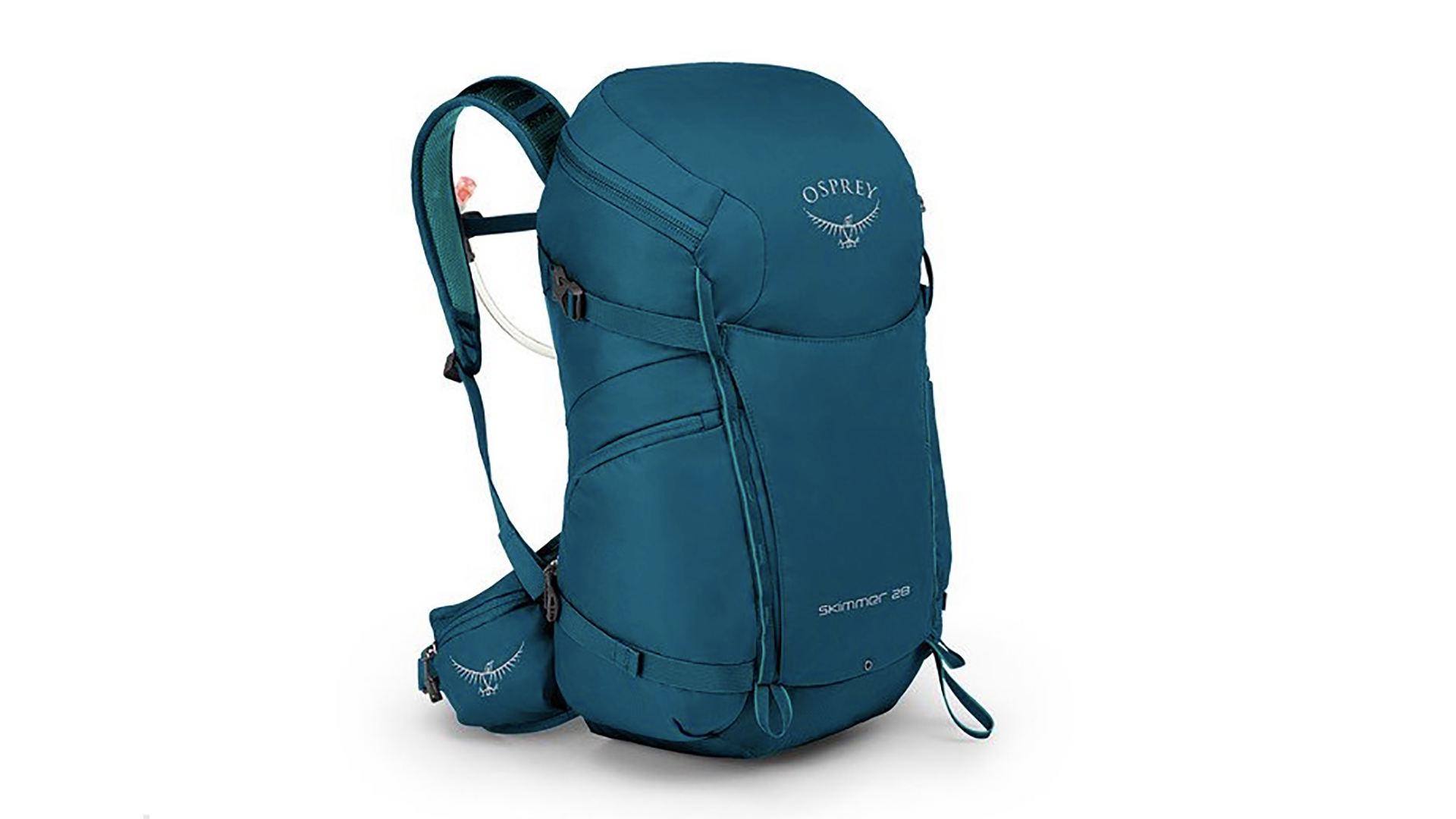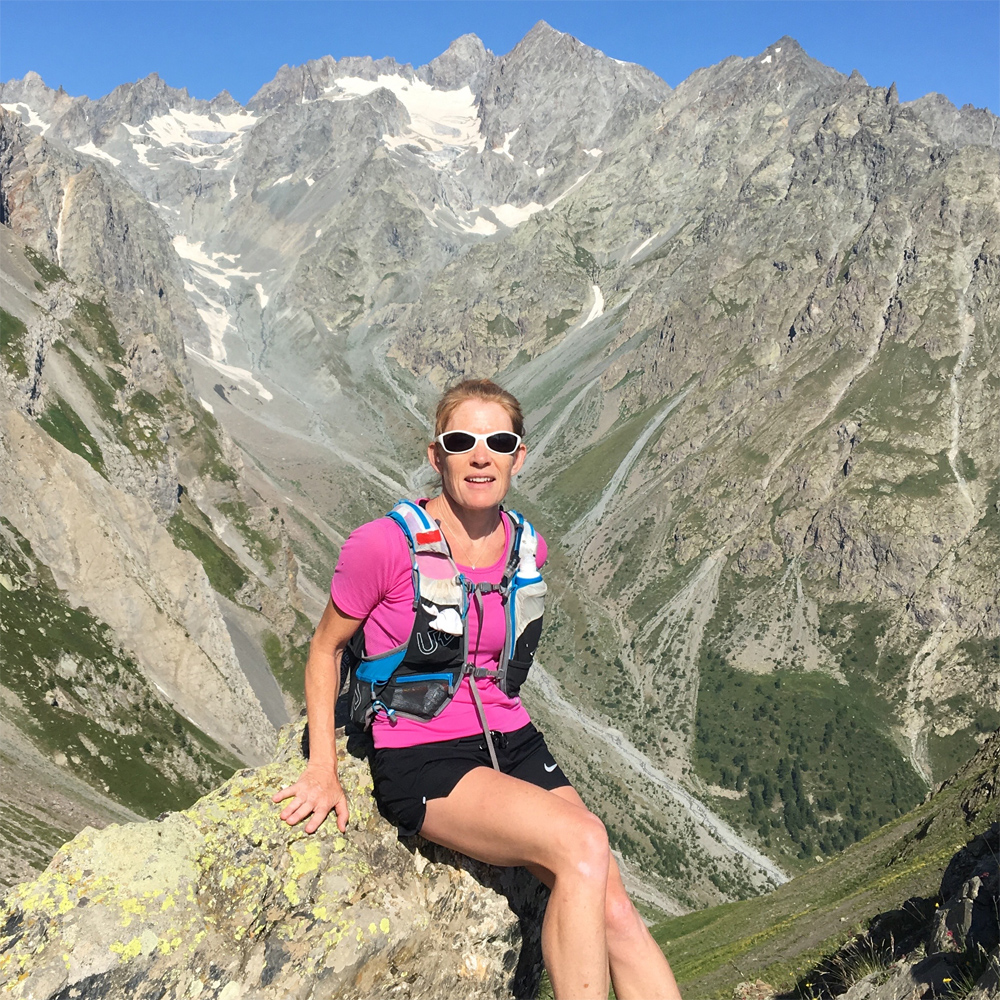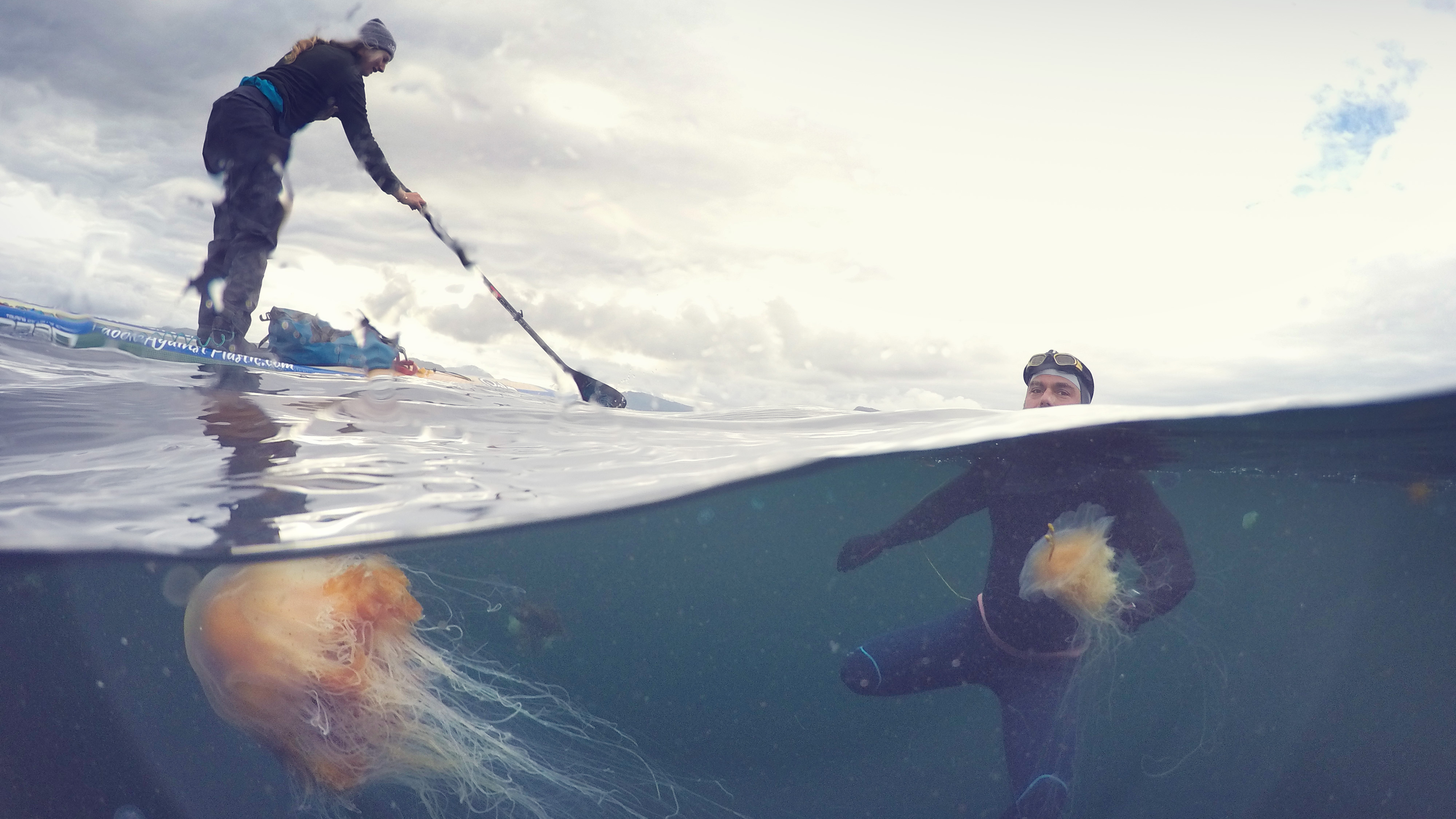Advnture Verdict
A classic women’s specific hydro pack, well-suited for hiking, trekking, backpacking, hut-to-hut adventures and even backcountry snow sports. (A similar men’s version of this pack is the Osprey Skarab 30.)
Pros
- +
Easy to fill reservoir
- +
Designed for women’s body shape
- +
Copious storage space
Cons
- -
Hydration sleeve narrow
- -
No easy access pockets
- -
Pack feels heavy when full
You can trust Advnture
Osprey Skimmer 28: first impressions
A classic design never goes out of style. The Osprey Skimmer 28 – while heavier than some we tested in our best women’s hiking backpack buying guide – is a spacious, no-nonsense option for adventurers seeking a happy medium between chunky external-frame packs and completely structureless ones.
A padded frame sheet combined with a wide-mouth top makes this bag super-easy to pack and retrieve gear. Also, when zippered up, the top of the pack lies flat and seamless, which we found helped keep contents dry in (light) rain, without the need to stop and add a fly.
The model is women-specific, with narrower cuts to the shoulder and hip straps to better suit a female shape, and we found this helped mitigate movement/friction as well as allowed us to better balance and manage heavy loads.
A slender compartment in the back keeps your hydration system separate from the rest of your gear, and is fairly easy to access, though the sleeve is quite narrow so consider sliding the filled bladder in first, before filling the rest of the pack. Always make sure you have enough water for hiking.
The reservoir itself is made of a super-thin and light material, and has a neat sliding closer at the top that is much easier to open for refilling than other bladder designs we’ve tried.
Storage is ample with a variety of roomy pockets for gear, food and other hiking essentials, but not as accessible as we’d have liked – other than the zippered pockets at the hip, you pretty much have to take the pack off in order to access your stuff. Trekking poles and an ice axe can be stowed in loops up front and easily retrieved as needed.
• RRP: $130 (US) / £90 (UK)
• Weight (empty): 758g / 1lb 10.7oz
• Hydration Capacity: 2.5L reservoir (included)
• Gear Capacity: 28L
• Colors: Sapphire Blue / Plum Red
Osprey Skimmer 28: on the trails
We took this pack up and down Pikes Peak (14,110 feet / 4,300m), which is not only one of the most majestic peaks in Colorado it also has one of the longest trails (24 miles or 40K roundtrip) and one of the highest elevation gains (7,400 feet / 2,252m).
Anytime you run or hike the Barr Trail to the summit of Pikes, you have to prepare for changing weather conditions given that it starts on the edge of the Colorado Springs and passes through numerous climate zones. We packed a lot of extra layers of clothes, water and snacks into this pack and took several breaks during our slow-ish, 10-hour roundtrip.
It was the biggest pack we tested and ideal that kind of adventure, although we had to refill the 2.5 liter reservoir at Barr Camp on the way up and the way down. We weren’t stoked about the magnetic connection for the drinking tube, but it was easy enough to ignore the magnets and tuck the under the straps.
The only drawback was the lack of accessible pockets on the front and sides, something that forced us to remove the pack every time we needed to access something. (There are small pockets on the waist belt and zippered pockets on each side of the pack, but they’re positioned to far back to be accessible for most items.)
A seasoned writer and editor in the endurance sport space, Casey has worked with top athletes and coaches on training books and memoirs. A regular contributor to Women's Running, she especially loves writing about running and hiking adventures, which have taken her on trails around the world – including to the Indian Himalaya, the DMZ in Korea and the Tibetan Plateau. She lives in Colorado, where she’s slowly chipping away at hiking all the state’s ‘14er’ mountains.


